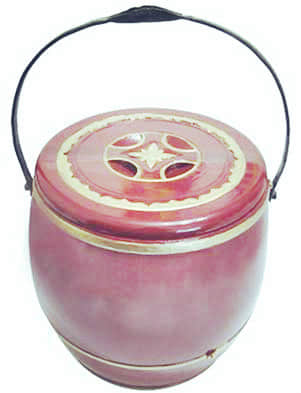Toilets in China, Chinese Toilet
The Basic Facts and The Toilet Revolution
Introduction to toilets in China - The Basic Facts
The toilets in China (often referred to as the “squat” toilet) may not be what you’d like, but they’re everything you need.
Toilets have come a long way in China – from ultra basic latrines to clean, modern airport quality facilities. While it still may be hard to find a Western style sitting toilet, by the end of your trip, you may not even want to. The availability and cleanliness of Chinese toilets have improved quite a lot in just the last 10 years, not to mention the last 100. The squat toilet is a sanitary, (surprisingly) healthier alternative to sitting toilets and using them in public bathrooms may just be your preferred method after a trip to China.
There are many places to find a toilet now in China, especially in highly touristed areas, but nice hotels and restaurants, coffee shops and malls, can all serve one’s needs in a pinch. On long trips, it’s probably best to try to avoid needing one too often as the quality of toilets in rural areas and on trains can be patchy. Make sure to bring the obligatory “toilet pack” with you – 1 or 2¥, tissues, napkins, sanitizer and you’ll feel as refreshed as being back home. Lastly, bone up on your Chinese characters for “Men” and “Women” to avoid some uncomfortable cultural situations.
History - From ancient times to 2015 and from the countryside to the city
Ancient Times
 Maofang茅房 (Public restroom) in Jin dynasty
Maofang茅房 (Public restroom) in Jin dynasty
For millennium, most humans used to do their business perched (or squatting) overtop a hole in the ground. This was the humble beginnings of the modern squat toilet.
In ancient rural China, many people located their house bathrooms next to, and above, the family’s pigsty. Their waste would go through a hole in the floor, and then run down a slide into the sty for the pigs to eat. In fact, the Chinese character cè厕 currently appears in the Chinese word for toilet, and in ancient times, also meant “pigsty”.
Once toilets began to be more integrated into homes (as opposed to being simply next to a pigsty), northerners usually chose the squat type because northern China used to, and still sometimes, suffer from frequent water shortages, so squat toilets were useful for storing the waste, which would then be used to fertilize crops.
Sitting toilets became more popular south of the Yangtze River, but they were little more than a crudely dug pit with a wooden bench placed over the top with a hole in it. In many places, the bench was actually a thick branch upon which people were precipitously perched.
 Wooden Matong
Wooden Matong
Chinese cities had a different take on how to best design a toilet. Most traditional residences in southern China lacked separate bathrooms, and residents usually sat on a large, water-filled wooden bucket known as a matong, or “horse bucket” — a word that is still used to refer to a lavatory bowl today. Every morning, residents would empty the contents of the matong and scrub the bucket clean with a bamboo brush in a nearby river.
Pit toilets and wooden matongs were very common in China as recently as the early 1990s. Even today, pit toilets in many rural areas in the north have yet to be replaced by flush toilets, largely due to remaining problems with water scarcity.
Flush toilets appeared in China as recently as the later 1850’s, but were mostly used by foreign residents in colonial areas of port cities. Local residents had limited access to these toilets and so they did not get accustomed to the flush toilet system. Furthermore, local residents of a city were still depended on by rural farmers needing the city residents’ waste as fertilizer (aka, night soil). Night soil collectors would collect human waste from public toilets and sell it to farmers in the countryside, who then would spread it on their crops. And finally, modern flush toilets rely on a city having an extensive sewage system, which was a rarity in China until about 50 years ago.
The 1900’S

The mid-20th century saw some major improvements in China regarding toilets. In 1943, the Central government announced a plan to build public restrooms across areas under its control and began to penalize those who urinated or defecated in public spaces. Even in the beginning, public sanitation was connected to creating a modern nation-state, alongside other improvements in health care, physical education, and even resisting foreign imperialism. In 1949, the Communist Party began the Patriotic Health Campaign which is today referred to as the National Hygienic Cities Campaign, which made further improvements to toilets across China.
In the ’80s, most public toilets installed a system comprising of a long trench with squatting spots separated by low partitions. A large water tank hung at one end of the trench, and one flush would wash away the contents of all users. These trench-style bathrooms are still used in some places today, especially in old bus and train stations, and other areas where high numbers of people tend to congregate.
Unfortunately, most Chinese toilets stayed somewhat underdeveloped vis-à-vis the development in the rest of the country (for instance, in the early 2010’s, China could boast having some of the best rail, air, and urban development in the world, yet the vast majority of the country’s toilets had barely changed much since the 1900’s.) Fortunately, that was about to change.
2015 and Chinese Toilet Revolution
 The Toilet Revolution in China
The Toilet Revolution in China
Those traveling to China in 2018 or later are much luckier than those traveling prior to 2015. Bathroom standards and availability are better now due to the Toilet Revolution that China undertook in 2015. In that year, the government announced a major campaign to improve the quality of toilets, and public bathrooms. They concentrated on three main features: making them more available, more modern, and improving the cleanliness and smell. Results are mixed. Around the most frequently visited tourist sites, there is a noticeable improvement in all three. In major cities and some rural locations, there is also a difference, albeit slightly less noticeable than pre-2015. Finally, in many rural locations, the revolution has yet to arrive. Bathrooms still primarily use the squat style toilet – both mainly because they are cheaper to install, more sanitary (see the section on “Benefits of Squat Toilets”), and because most Chinese people are more used to using them.

 How to Use a Squat Toilet in China
How to Use a Squat Toilet in China  Toilets and Traveling
Toilets and Traveling  Interesting Public Bathrooms in China
Interesting Public Bathrooms in China  Privacy and Personal Space in China
Privacy and Personal Space in China